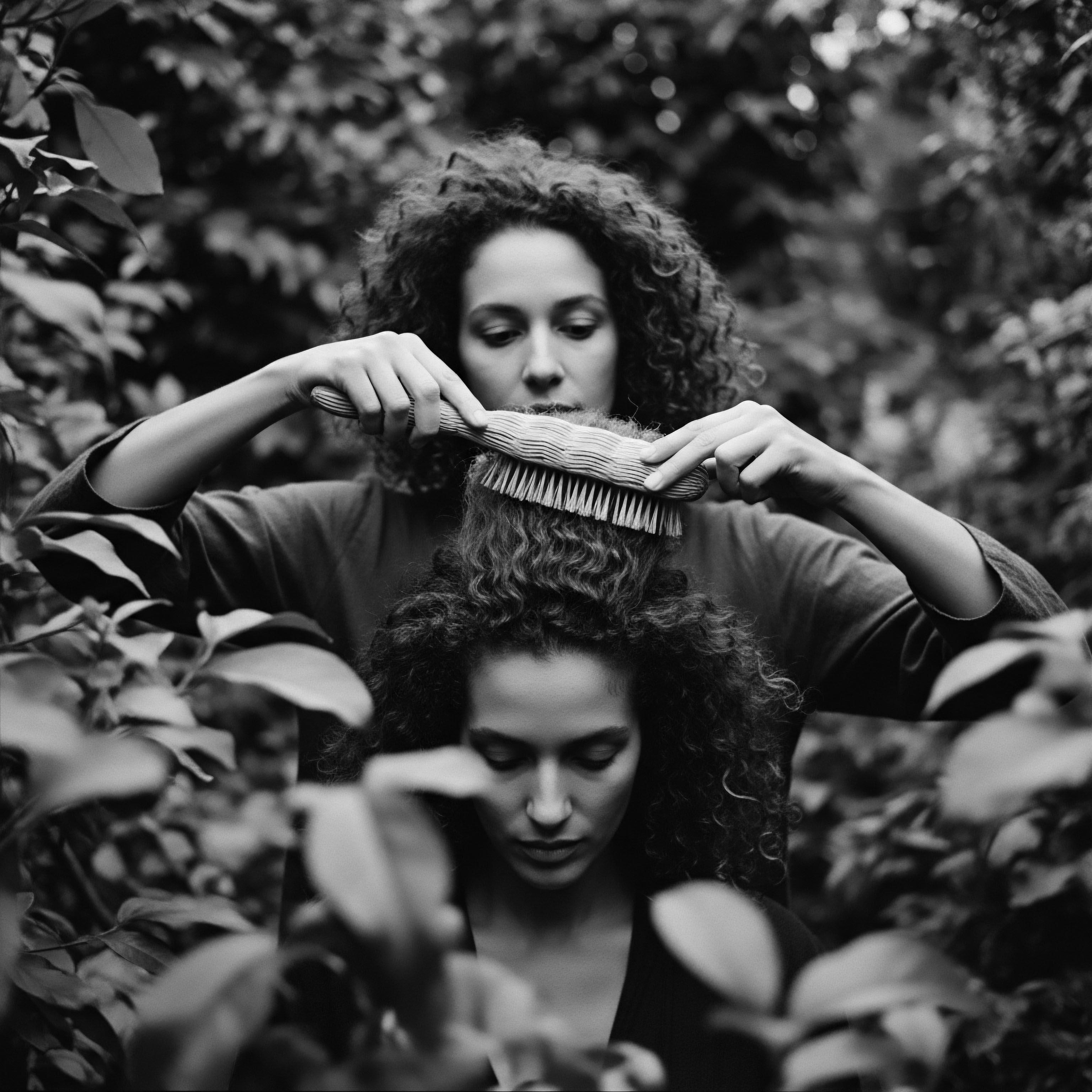
Fundamentals
The concept of “Algerian Hair” transcends a singular biological classification; it stands as a living testament to the land’s enduring human heritage and the intricate interplay of its diverse populations. This understanding is not limited to a specific curl pattern or a particular shade; rather, it encompasses the magnificent spectrum of hair textures, tones, and cultural practices found across Algeria’s vast and ancient landscapes. The definition of Algerian Hair, therefore, is rooted deeply in a confluence of ancestral lineages, each contributing to a vibrant mosaic of follicular expressions.
Within Algeria’s borders, genetic inheritances from indigenous Amazigh communities, historical Arab migrations, and the enduring echoes of Sub-Saharan African connections all contribute to the varied characteristics observed in hair. It is a biological reality reflecting centuries of movement, intermingling, and adaptation to varied environments. Forensic research, though focused on identification, has indeed acknowledged this inherent variability. A study examining hair characteristics within the Algerian population underscored significant diversity, noting the presence of numerous colors, from Rich Browns to Deep Blacks, and Even Blondes, alongside an assortment of shapes—ranging from Sleek Straight Strands to Undulating Waves, Pronounced Curls, and Even Tightly Coiled Forms, sometimes referred to as ‘watchspring’ curls.
This empirical evidence, derived from samples across different Algerian regions, points to a compelling biological truth ❉ Algerian hair is not uniform; it is a tapestry woven from myriad genetic threads, offering considerable distinction between individuals (Ouadahi et al. 2012). This inherent variation lays the groundwork for the cultural meanings people attach to their hair.
Algerian Hair embodies a rich spectrum of textures and cultural practices, shaped by ancestral lineages and the land’s profound history.
This biological diversity finds its echo in the ancestral wisdom surrounding hair care. From the Sahara’s arid expanses to the coastal plains and mountainous regions, traditional care rituals emerged from a deep connection to the earth and its botanical gifts. Generations understood intuitively what modern science now often affirms ❉ the importance of natural emollients, protective styling, and gentle handling. This knowledge was passed down through families, not merely as practical grooming tips, but as sacred acts of preservation, connecting each individual to a collective past.
For communities with textured hair, this communal inheritance carries particular weight. Across the Black and mixed-race diaspora, hair has always served as a potent symbol of identity, resilience, and connection to heritage. For many, hair becomes a chronicle of existence, recording not only personal journeys but also the broader narratives of a people.
Algerian hair, in its myriad forms, tells a similar story, reflecting layers of history, adaptation, and cultural continuity. Understanding its fundamental essence requires an appreciation for both its intrinsic biological qualities and the profound cultural meanings assigned to it throughout time.
- Biological Spectrum ❉ The varied textures and shades present in Algerian hair underscore the complex genetic legacies across the region, a testament to historical movements and diverse ancestral contributions.
- Environmental Adaptation ❉ Hair characteristics also display adaptation to Algeria’s varied climatic zones, from the sun-drenched south to the Mediterranean north, influencing traditional care methods.
- Ancestral Echoes ❉ Each hair strand carries the silent narrative of generations, preserving the wisdom of natural care and communal identity passed down through time.

Intermediate
Venturing deeper into the understanding of Algerian Hair demands a thoughtful exploration of its cultural significance, moving beyond surface-level observations to grasp the intertwined meanings of identity, community, and resistance. This level of comprehension recognizes that hair, within Algerian society, is not a static physiological attribute; it is a dynamic medium for cultural expression, a canvas for ancestral art, and a quiet yet powerful repository of historical memory. The interpretations placed upon hair within Algerian contexts reveal layers of social structure, spiritual belief, and collective narratives that have shaped the people for millennia.
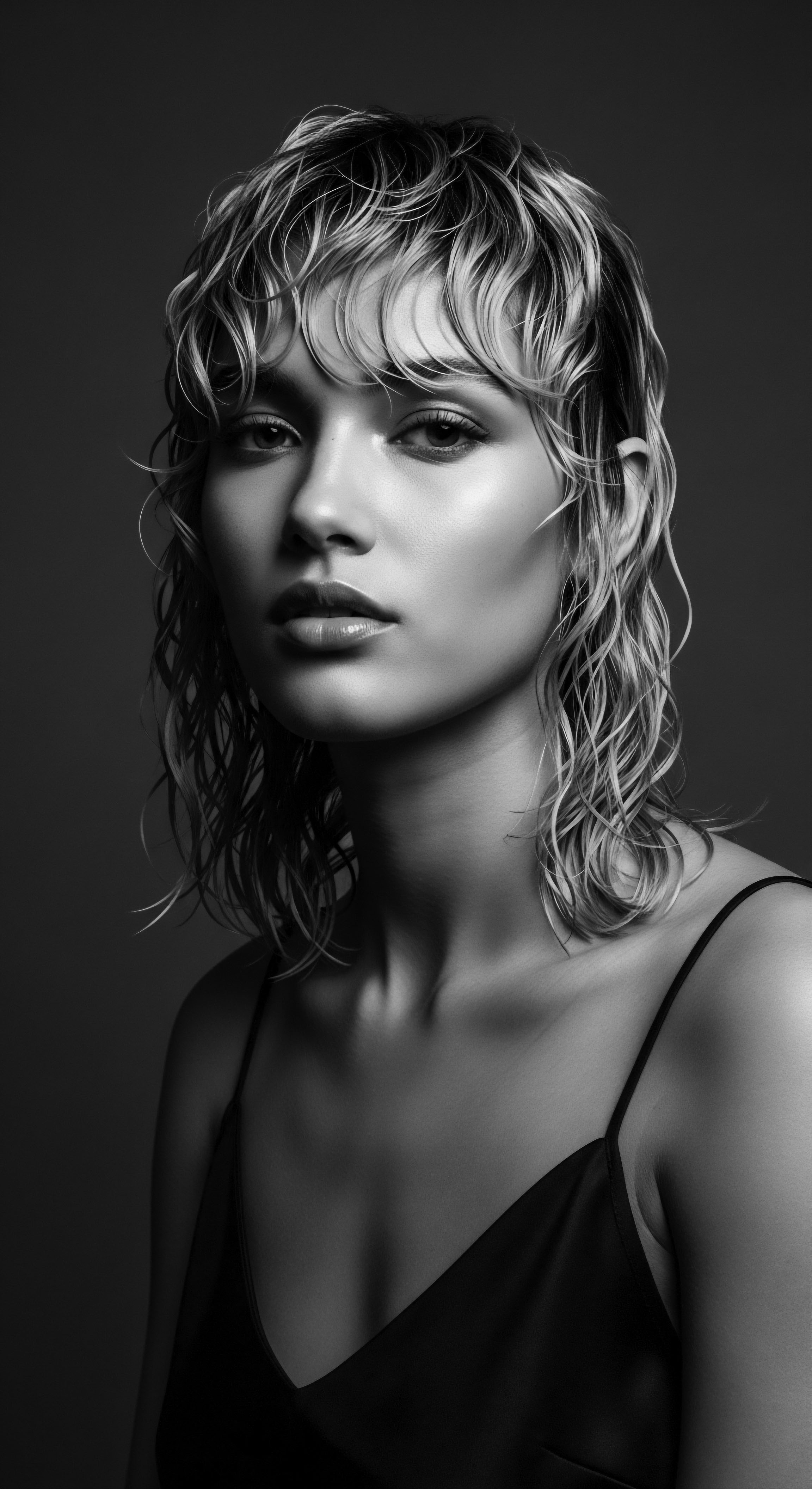
Cultural Resonance and Adornment
The adornment of hair across Algeria’s diverse ethnic groups, particularly among the indigenous Amazigh (Berber) communities, offers a profound illustration of cultural values. Hairstyles historically communicated a wealth of information ❉ a person’s marital status, their age, their tribal affiliation, and even their social standing within the community. These visual cues acted as a silent language, allowing individuals to read the stories etched into each braid, coil, or adornment. Hair was styled with deliberate intention, often requiring considerable time and communal effort, transforming the act of grooming into a bonding ritual.
This communal aspect, a gathering around the care of hair, speaks to the social cohesion fostered by these practices, where shared moments of beautification reinforced familial and communal bonds. The very process became a ceremonial act, honoring the individual while affirming collective identity.
Consider the intricate braiding styles of Amazigh women, which, for centuries, were more than aesthetically pleasing forms. They were three-dimensional expressions of belonging, frequently incorporating elements such as Beads, Coins, and Metal Jewelry. The Taguemout style, often seen among women of the Atlas Mountains, involves multiple tight braids adorned with decorative elements, signifying connection to place and tradition. Similarly, the Tawesna of the Sahara region comprises braids embellished with beads and shells, symbolizing beauty and status.
Even specific bridal hairstyles, such as the Chedda from the Rif Mountains, are elaborate constructions of headdresses and jewelry, signaling new social standing. These examples highlight that hair was an integral component of a person’s cultural presentation, deeply connected to their life journey and community roles.

The Kardoune ❉ A Legacy of Gentle Care and Quiet Resistance
One particularly poignant example of Algerian hair heritage, and a powerful symbol of traditional care meeting modern aspirations, is the Kardoune. This unassuming accessory, a long, narrow ribbon typically woven from silk or cotton, has been a cornerstone of Algerian beauty traditions for untold generations. The Kardoune is wrapped tightly around the hair, usually after washing, and worn overnight.
Its purpose extends beyond simple styling; it functions as a protective cocoon for the hair, preventing frizz, minimizing tangles, and promoting a smoothed, elongated appearance without the application of damaging heat. The term “qardoun” itself, rooted in Arabic, speaks to its purpose ❉ “to straighten or flatten,” a testament to its long-standing utility.
The Kardoune, a traditional Algerian ribbon, embodies generations of ingenuity in hair care, providing a heat-free method for smoothing and protecting textured strands.
The story of the Kardoune is not merely one of practicality; it is a narrative steeped in cultural identity and a subtle form of resistance. Its use dates back to at least the early 1800s, and it persists as a cherished practice among Algerian women today. In a world increasingly dominated by heat-styling tools and chemical treatments that can compromise the integrity of textured hair, the Kardoune stands as an ancestral alternative, offering a gentle, non-damaging pathway to desired styles.
This commitment to traditional methods, passed from mothers to daughters, becomes a conscious act of preserving heritage and honoring ancestral wisdom in an age of rapid change. It represents a collective decision to maintain hair health and beauty through practices rooted in a deep understanding of natural hair’s needs, contrasting with externally imposed beauty standards that often favored entirely different textures.
The Kardoune serves as a powerful historical example illuminating the Algerian Hair’s connection to textured hair experiences and ancestral practices. This traditional hair accessory, while primarily utilized for hair protection and achieving a straightened effect without heat, represents a broader phenomenon across North Africa and parts of the Black diaspora ❉ the inventive adaptation of local resources and ingenuity to care for and style diverse hair textures. Its enduring popularity in Algeria, persisting through centuries of cultural shifts and external influences, speaks volumes. In a time when colonial powers often imposed Eurocentric beauty ideals that devalued natural textured hair, the continued practice of using the Kardoune provided a means for Algerian women to maintain their hair in ways that aligned with their aesthetic preferences and practical needs, without succumbing entirely to alien standards.
It allowed for the preservation of length, health, and a particular smoothed appearance, offering a counter-narrative to the idea that textured hair was inherently “unmanageable” or “undesirable” without chemical alteration. This practice, therefore, functions as an act of cultural affirmation, a quiet defiance against the erosion of traditional practices, thereby powerfully illuminating the Algerian Hair’s connection to ancestral wisdom and its resilience in the face of pressures that often confronted Black and mixed-race hair experiences across the globe.
| Traditional Element Argan Oil |
| Purpose and Heritage Connection Sourced traditionally by Amazigh women, this oil (though more widely associated with Morocco) also finds use in Algerian hair care. It offers nourishment, strength, and protection against harsh environmental elements, reflecting a holistic, earth-connected approach to well-being. |
| Traditional Element Henna |
| Purpose and Heritage Connection Used for centuries across North Africa and the Middle East, henna promotes hair growth, maintains natural shine, and strengthens strands from the root. Its application is often part of ceremonial traditions, linking hair care to broader cultural celebrations. |
| Traditional Element Kardoune |
| Purpose and Heritage Connection A ribbon used to gently smooth and protect hair without heat, symbolizing a continuity of ancestral methods that prioritize hair health and preserve length. It stands as a practical expression of cultural identity. |
| Traditional Element These elements signify the profound link between Algerian Hair care and the rich ancestral knowledge of natural resources and communal traditions. |
The enduring vitality of these practices underscores a collective commitment to health and beauty rooted in local knowledge systems. Each traditional element, whether a botanical extract or a styling tool, carries the weight of generations, serving as a conduit between the past and present, ensuring that the heritage of Algerian Hair remains vibrant and relevant.
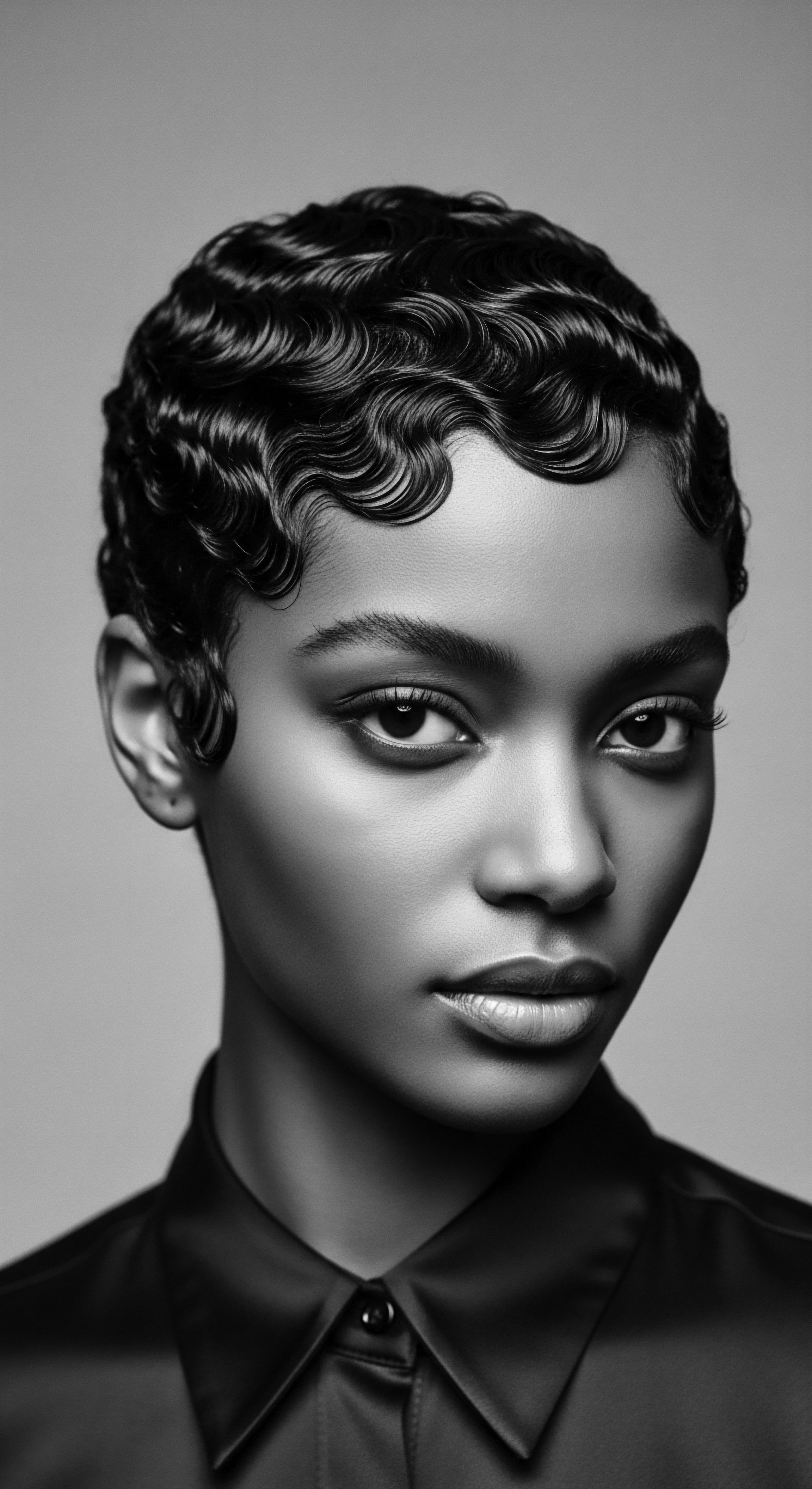
Academic
The academic understanding of “Algerian Hair” extends beyond descriptive enumeration of textures and practices; it requires a rigorous, multi-disciplinary examination that positions hair within complex socio-historical, anthropological, and biological frameworks. This deeper analysis reveals that Algerian Hair is a dynamic locus where genetic heritage, cultural agency, and the impact of historical forces converge, offering a compelling case study for the broader study of textured hair in diasporic contexts. It is through this lens that we can truly grasp its comprehensive meaning and significance.
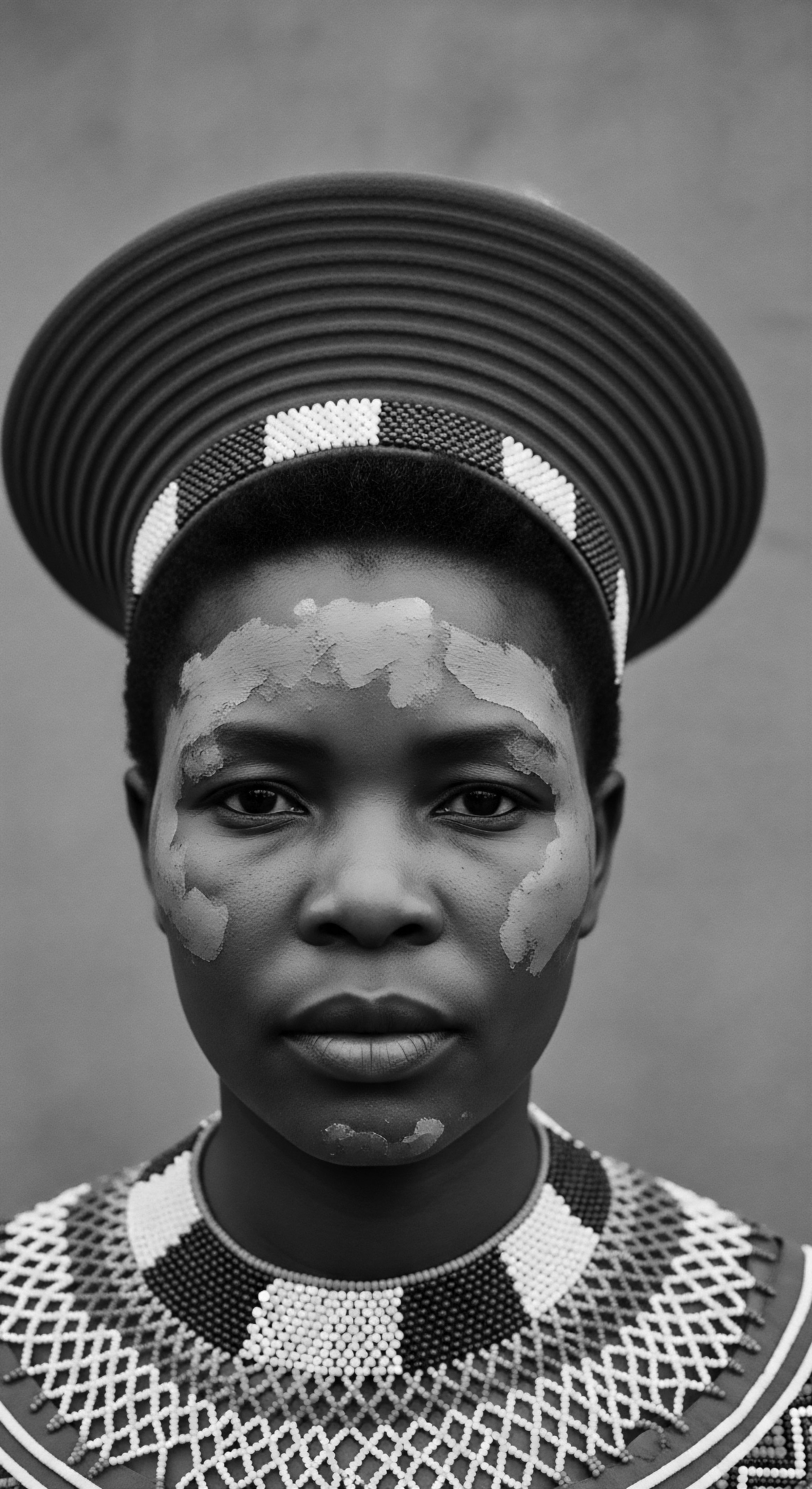
Meaning of Algerian Hair ❉ A Polysemic Identity Marker
The meaning of Algerian Hair is inherently polysemic, carrying multiple layers of significance that vary across historical periods, regional specificities, and individual experiences. From an academic standpoint, Algerian Hair represents:
- A Biological Continuum ❉ The forensic analysis previously mentioned (Ouadahi et al. 2012) reveals a remarkable range of hair characteristics—color, shape, length, and width—within the Algerian population. This biological diversity is not random; it reflects millennia of genetic flow across North Africa, the Mediterranean, and Sub-Saharan Africa. The presence of varied phenotypes, from “watchspring” coils common in Southern Algeria to the lighter, sometimes blond or red hair observed in Kabyle populations, speaks to a deeply heterogeneous genetic landscape. This natural variability challenges any monolithic categorization of “Algerian hair” as a single type, compelling instead a recognition of its intrinsic spectrum.
- A Cultural Text ❉ Hair in Algeria has functioned as a nuanced communicative system, a form of non-verbal cultural text that conveys information about social status, age, tribal belonging, and even spiritual disposition. Traditional Amazigh hairstyles, for example, were not merely decorative; they were codified expressions of identity, legible to those who understood the cultural grammar of adornment. The specific braiding patterns, the incorporation of symbolic elements like beads or shells, and the overall silhouette of a style could denote a woman’s marital status or her family’s wealth. This deep meaning transforms hair from a biological attribute into a performative aspect of cultural identity.
- A Site of Historical Resistance and Agency ❉ Throughout Algeria’s history, particularly during periods of external domination, hair has served as a potent site of resistance against cultural assimilation. The French colonial project, for instance, sought to impose Western norms and suppress indigenous customs, which often included practices related to hair. In response, the maintenance of traditional hair care rituals and styling methods became an act of defiance, a quiet assertion of national and ethnic identity (MexicoHistorico.com, 2025). The continued practice of the Kardoune, as examined in the intermediate section, epitomizes this enduring agency. It represents a deliberate choice to sustain ancestral methods of care and styling, thereby rejecting external pressures to conform to Eurocentric beauty standards. This historical dimension reveals hair as a dynamic element in the ongoing negotiation of identity and cultural preservation.
- An Embodiment of Wellness and Ancestral Wisdom ❉ From a holistic perspective, the meaning of Algerian Hair is also rooted in traditional approaches to well-being that recognize the interconnectedness of body, spirit, and environment. The reliance on natural ingredients like argan oil and henna, extracted from the local ecosystem, underscores a philosophy of care that prioritizes natural health and sustainability. These practices were not born from scientific laboratories but from generations of accumulated experiential knowledge, passed down through oral traditions and lived experience. The efficacy of such remedies, now often validated by modern scientific understanding of their chemical properties, highlights the profound wisdom embedded in ancestral practices.
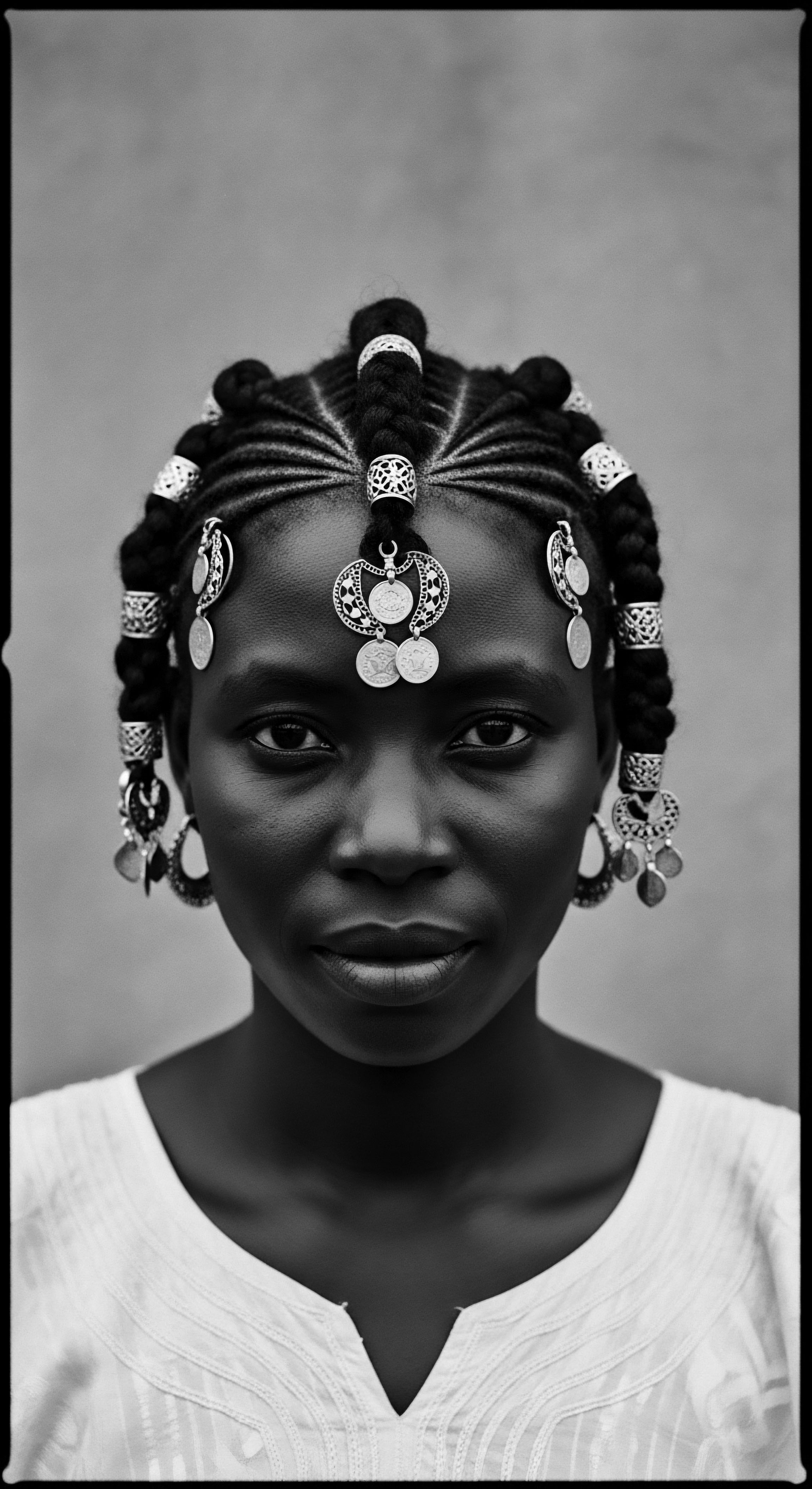
Interconnected Incidences ❉ Colonization’s Shadow and Hair Identity
The impact of colonization casts a long, complex shadow over the experience of Algerian Hair, particularly in its connection to Black and mixed-race hair narratives globally. The French occupation, spanning from the 19th to the mid-20th century, did not merely involve political subjugation; it was a comprehensive attempt to dismantle Algerian identity and impose Western cultural norms. Hair, as a visible and deeply symbolic aspect of identity, became a battleground in this cultural imposition.
Colonial ideologies often pathologized textured hair, deeming it “uncivilized” or “unruly” when compared to straight European hair types. This denigration aimed to instill an inferiority complex, thereby facilitating assimilation. For Algerian women, the pressure to adopt Western hairstyles or chemically alter their natural textures was subtle yet pervasive. This historical reality resonates powerfully with the experiences of Black and mixed-race individuals in other diasporic communities, where similar pressures led to widespread adoption of straightening methods, often at the expense of hair health.
Colonization’s efforts to homogenize Algerian hair practices underscore a broader struggle within the Black and mixed-race diaspora to preserve natural hair identity.
However, the historical record also illustrates resilience. Just as African communities in the diaspora developed innovative protective styles and natural hair care regimens as acts of cultural preservation, so too did Algerians. The consistent use of the Kardoune is a prime example of such enduring practice.
It demonstrates a quiet, yet powerful, refusal to entirely abandon ancestral ways of caring for and presenting hair. This tradition was not merely about aesthetic preference; it became an everyday act of cultural fidelity, a tangible link to a threatened heritage.

Analysis of Long-Term Consequences ❉ Hair as a Chronicle of Identity
The long-term consequences of these interconnected incidences for Algerian Hair identity are manifold. They include:
- Intergenerational Transmission of Knowledge and Trauma ❉ The memory of colonial pressures and the ingenuity of ancestral responses are transmitted across generations. While the Kardoune persists, some effects of historical bias against textured hair may still influence self-perception and beauty standards within contemporary Algerian society. This echoes the intergenerational transmission of hair-related trauma observed in many Black communities worldwide, where centuries of discrimination have left deep imprints on communal hair narratives.
- The Enduring Relevance of Traditional Practices ❉ Despite the advent of modern hair care products and technologies, ancestral practices like the Kardoune and the use of natural oils retain significant cultural and practical relevance. They serve not only as historical artifacts but as living traditions that offer demonstrably healthier and more sustainable alternatives for hair care. Their resurgence in popularity, sometimes fueled by a renewed global interest in natural beauty, also reflects a desire among younger generations to reconnect with their heritage.
- Hair as a Symbol of National and Ethnic Pride ❉ In post-independence Algeria, the diversity of hair types and the persistence of traditional practices have become intertwined with broader assertions of national and ethnic identity. The recognition of Amazigh culture and language, for instance, has brought increased visibility to Amazigh hair traditions as a vital component of Algeria’s multifaceted identity. Hair, in this context, stands as a visual affirmation of a sovereign and culturally rich nation.
The study of Algerian Hair, therefore, is not a superficial pursuit of beauty trends; it is a profound engagement with human history, cultural resilience, and the deeply personal connection individuals have to their physical selves. It challenges simplistic categorizations and demands an appreciation for the intricate ways in which biology, culture, and history converge upon a single strand of hair, making it a powerful emblem of identity and heritage. This detailed examination helps us comprehend the enduring impact of historical forces on personal and collective expressions of beauty and selfhood.

Reflection on the Heritage of Algerian Hair
The journey through the intricate world of Algerian Hair reveals far more than a mere collection of textures or styling practices. It unveils a profound meditation on the enduring soul of a strand, woven into the very fabric of identity and ancestral memory. From the elemental biology that grants each hair its unique character to the tender threads of care passed down through generations, and finally, to its role in voicing identity and shaping futures, Algerian Hair is a living archive. It whispers tales of resilience, of adaptation, and of the unwavering human spirit that finds beauty and meaning in its own, authentic expression.
This exploration brings us to a quiet understanding ❉ hair, particularly textured hair, is never truly separate from its heritage. It carries the weight of history, the joy of communal rituals, and the silent strength of those who came before. In the gentle act of caring for Algerian Hair, whether through ancient oils or the diligent wrapping of a Kardoune, there is a profound connection to a legacy of wisdom. It is a dialogue between past and present, honoring the ingenuity of our ancestors while charting a path towards future generations.
Algerian Hair serves as a dynamic, living chronicle, articulating the enduring spirit of its people and their deep ancestral wisdom.
The diversity present within Algerian Hair serves as a powerful reminder of the rich tapestry of human experience, mirroring the complexities and beauties found across the broader Black and mixed-race hair experiences. Each curl, wave, or coil stands as a testament to continuity, a quiet affirmation of heritage in a world that often seeks to homogenize. In this rich array, we discover not just beauty, but also profound wisdom – a wisdom that teaches us to value authenticity, to respect tradition, and to celebrate the unique narrative carried within every strand.
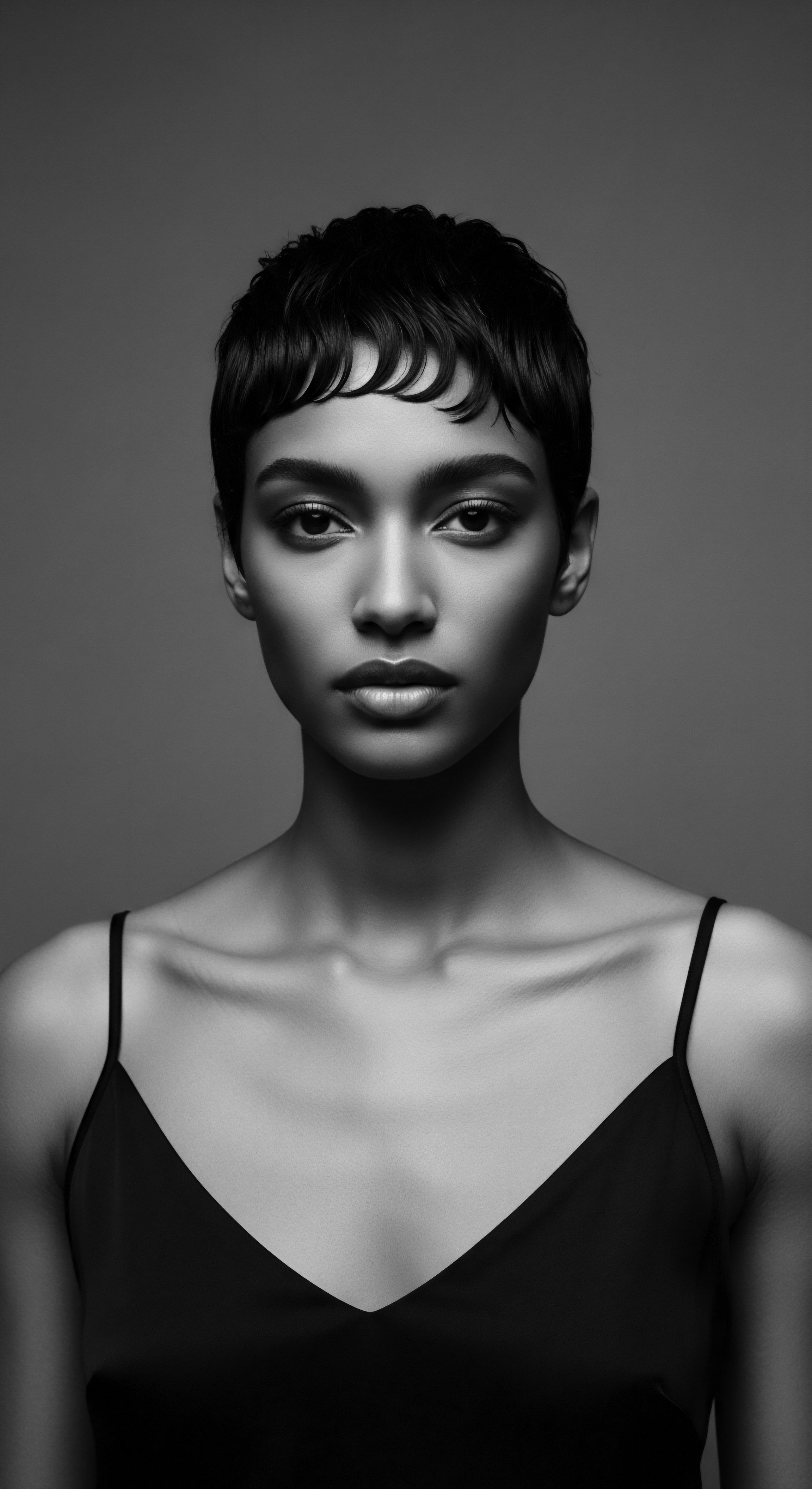
References
- Ouadahi, Z. Mekki, M. Ziani, C. & Abdessamad, Z. (2012). Assessing the benefits of head hair Analysis in Algeria. Algerian Journal of Forensic Science and Criminology, 1(1), 17-21.
- Tharps, L. & Byrd, A. (2001). Hair Story ❉ Untangling the Roots of Black Hair in America. St. Martin’s Press.
- Blom, B. (2012). The Veil as a Protective and Symbolical Item in North Africa. University of Oslo.
- Hilton-Simpson, M. W. (1921). Among the Hill Folk of Algeria ❉ Journeys Among the Shawia of the Aurès Mountains. T. Fisher Unwin Ltd.
- Gordon, M. (2000). African Hairstyles ❉ Styles of Yesterday and Today. University Press of Mississippi.
